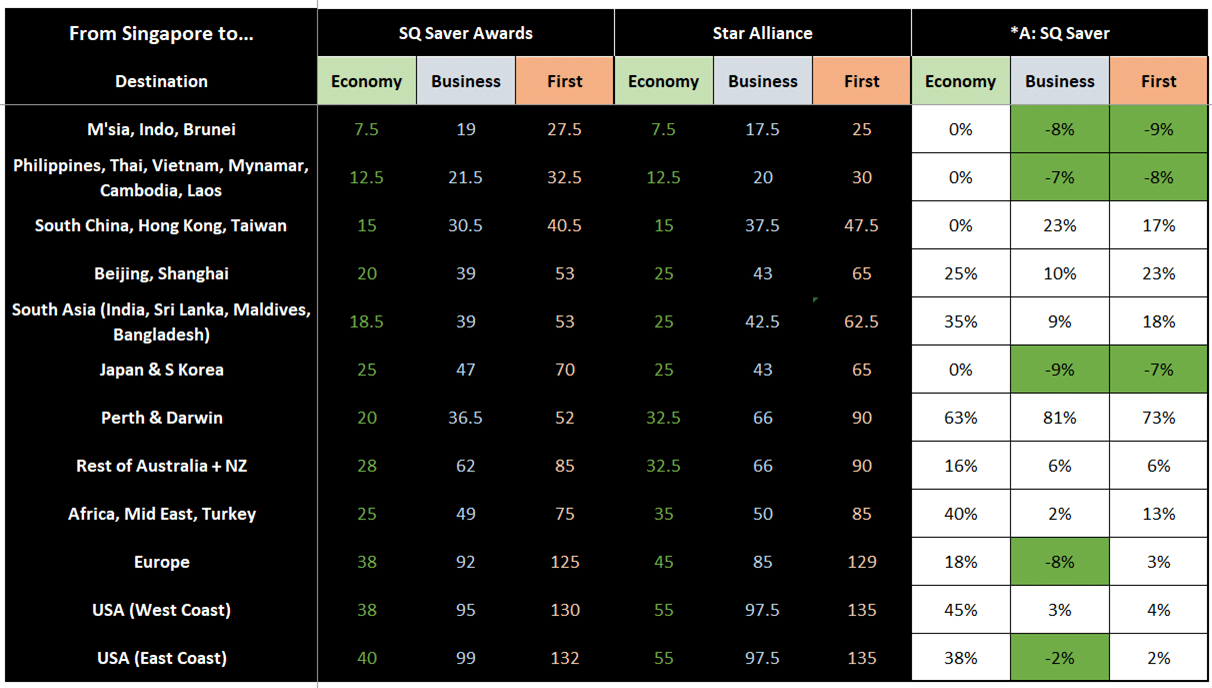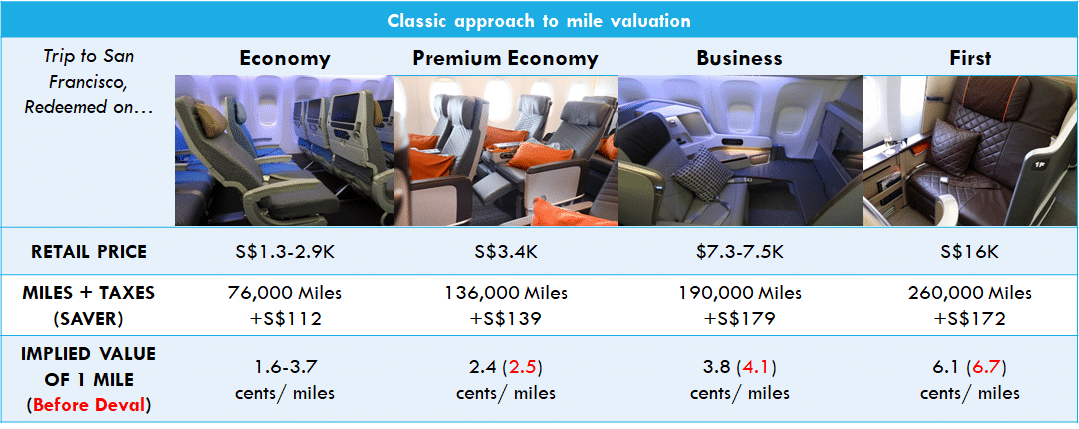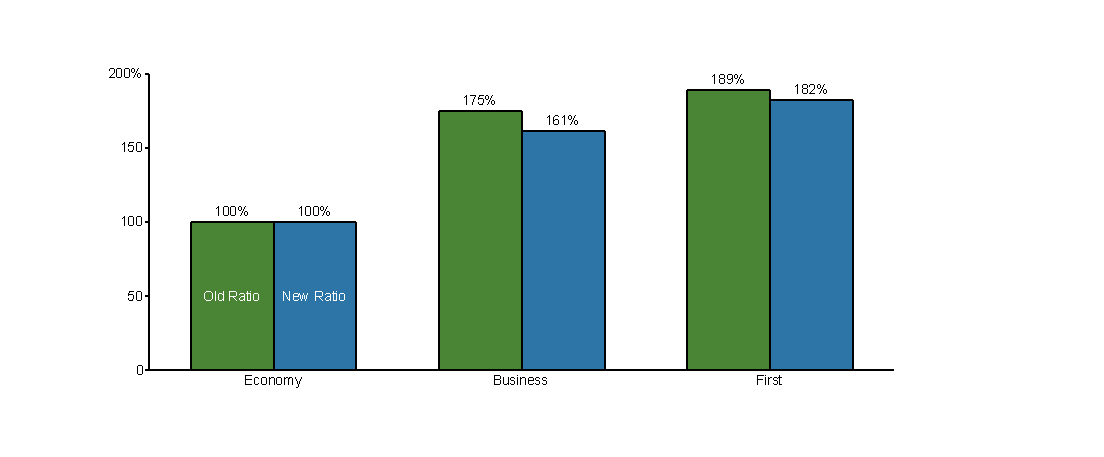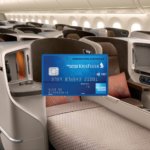Early this morning, Singapore Airlines quietly unveiled a revised KrisFlyer award chart that takes effect from 24 January. I’ve summarized the broad strokes here, but to reiterate:
- Economy class awards, both Saver and Advantage are unaffected
- Premium Economy Saver awards increase by an average of 6%, First and Business Class Saver awards by 8-9%
- No changes to the Star Alliance award chart or RTW prices
- No changes to other partner charts (eg Vistara, Virgin Australia, Alaska etc)
I’ve written a piece that tracks KrisFlyer’s historical devaluations which is well worth a read on a day like this, but in this post I’m going to dive into some of the implications the 2019 devaluation will have.
Certain Star Alliance awards are now cheaper than Singapore Airlines flights…but for how long?

The table above is a comparison of Star Alliance award prices versus Singapore Airlines awards. A green cell in the last 3 columns indicates that the Star Alliance cost is cheaper than the Singapore Airlines one. For example, a Star Alliance Business Class award to Europe costs 85K miles, versus 92K miles for Singapore Airlines.
Remember that so long as at least one of your flights is not operated by SQ/MI, the entire award prices according to the Star Alliance award chart. This creates a funny loophole, in that you could book a SIN-FRA-TXL flight for 85K miles with SIN-FRA on SQ and FRA-TXL in LH, then get off in FRA and skip your connecting flight.This would only work if you didn’t have check-in luggage, of course, but it’s still quite odd.
However, you need to factor fuel surcharges into the equation. A Star Alliance Business Class award on ANA from SIN-NRT may cost 43K miles versus 47K with Singapore Airlines, but remember that you’ll be paying fuel surcharges on the ANA ticket and not the SQ one.
Just to mess with your mind more- there’ll be certain Star Alliance carriers that don’t impose fuel surcharges, like United Airlines on domestic legs. So hypothetically, you could book a SIN-EWR-BOS ticket for 97.5K miles with SIN-EWR on SQ and EWR-BOS on UA and throw away the UA leg to save 1,500 miles. You know, if you were so inclined.
One does wonder how long this will last, because a similar situation existed after the March 2017 KrisFlyer devaluation for flights to the USA. That situation lasted for 8 months, before SQ closed it with the November 2017 Star Alliance award chart devaluation.
There’s still value to be had via the Stopover trick, although savings are relatively smaller
Here’s something interesting I noticed. Check out these sample Business Class saver routings, and how much they’d cost before and after the 2019 devaluation:
| Sample Routing (Business Class) | Cost Before Devaluation | Cost After Devaluation |
| LHR-SIN-MEL | Indv: 143K Stopover: 105K Savings: 38K |
Indv: 154K Stopover: 116K Savings: 38K |
| BCN-SIN-PER | Indv: 117.5K Stopover: 95K Savings: 22.5K |
Indv: 128.5K Stopover: 106K Savings: 22.5K |
| PVG-SIN-JFK | Indv: 127K Stopover: 110K Savings: 17K |
Indv: 138K Stopover: 121K Savings: 17K |
| BOM-SIN-SFO | Indv: 123K Stopover: 98K Savings: 25K |
Indv: 134K Stopover: 109K Savings: 25K |
| NRT-SIN-SYD | Indv: 101K Stopover: 83K Savings: 18K |
Indv: 109K Stopover: 91K Savings: 18K |
Notice something? Your savings, in absolute terms, are the same, before and after. Of course, in percentage terms they’ve dropped, but it means that booking a Singapore stopover is still more worth it compared to two individual legs.
Have a read of The Milelion’s guide to stopovers if you want to really stretch your miles.
Your valuation of a mile should remain roughly the same
Devaluations must mathematically affect the value of a mile, because you’re paying more miles for the same ticket. So why do I say your valuation should be roughly the same?
Because if you’ve been using a benchmark of 2 cents per mile, that’s already a pretty conservative estimate. I think that psychologically speaking, after 24 January I’d be more averse to paying 2 cents per mile out of pocket (which means that the UOB PRVI Pay facility will be less attractive to me), but I’d still use 2 cents as my shorthand value when calculating tradeoffs.
If you want to get technical, some back-of-the-envelope calculations show that the impact of the devaluation is milder for Premium Economy (~6%) versus First and Business Class (~8-9%).

That dynamic plays out in the example above, where you see that the value of a mile declines more noticeably for Business and First Class redemptions.
Of course, as I mention often in our Miles for Beginners workshops, this way of deriving the value of a mile is oversimplistic- you need to consider the likelihood of finding saver space, whether you’d really have been willing to pay revenue prices for premium cabins, the miles you’d earn on a revenue ticket etc.
The gap between Saver and Advantage costs has somewhat narrowed

This may be a moot point for people who would never pay Advantage prices anyway, but you might want to note that the premium you pay for an Advantage award over a Saver award has decreased.
Before the devaluation, a Business Class Advantage award cost 175% more than a Saver award on average. That’s now 161%. Similarly, a First Class Advantage award cost 189% more than a Saver award on average. That’s now 182%.
Small comfort.
Are we going to see more frequent, smaller magnitude devaluations?
Over the last 10 years the Singapore Airlines award chart has been devalued about three times. Here’s how hard the devaluation hit each time.
- November 2007- unknown magnitude because I don’t have the charts, but I understand it was pretty significant
- March 2012- up to 45%
- March 2017- up to 32%
- January 2019- up to 12%
I wonder if this means we’ll start seeing more frequent devaluations that are smaller in magnitude. This would be in line with the proliferation of ways to earn KrisFlyer miles- 10 years ago there were much fewer partners. Now there are many more, but more miles means a more regular need to adjust values. If I were a betting man, I’d wager this is where we’re headed.
Conclusion
This 2019 devaluation has come as a bit of a rude shock, but after a bumper year of miles earning in 2018, I can’t say it was totally unexpected.
Even as I write this, I’ve just received a mail from SIA talking about numerous other changes to KrisFlyer and it’s a doozy. Award calendar searching, more upgrade options, waitlists clearing by 14 days…stay tuned because today’s going to be a packed one.







Hi Aaron,
I also noticed a ‘new’ note at the top right hand corner of the “General Notes”… that basically sets in stone the policy for charging USD100 for a non-entitled stopover.
Small comfort, in the overall scheme of things; the only good thing is there is no need in future to discuss this point with a Krisflyer person over the phone!!
Chris Lim
Adelaide, Australia
What I really dislike is that the devaluation is carried out on the quiet – no information is presented on the News and Announcement page on Krisflyer website. As a Krisflyer member, I did not receive any email notification of the changes either. Why, I just came off an online chat with a Krisflyer customer representative and he indicated that he is unable to advise on whether any change has been made to the redemption program! Without notifying its members, it really defeat the purpose of 3 week advance notice for its new award chart.
There is an edm that just got sent out
Enhancements!
Good to also mention changes for Australia/NZ to Zones 1-3 (new) vs Zones 1-4 (current) redemption rates 🙂
A plausible argument could probably be made that the success of blogs like the Milelion’s have resulted in a spike in the number of miles being accrued in the market, and thus the requisite devaluation to ensure that the demand for SQ’s awards remains fairly constant. In other words, “spoil market” for those who took the time to actually follow and read all the T&Cs of all the cards (lots of people can’t read for themselves though)… LOL.
When a saver award is 100 and the advantage award is 160, then the cost of the advantage award is 60% more and not 160% more.
[…] other frequent flyer programmes, such as Cathay Pacific’s Asia Miles. SQ has also been known to devalue KrisFlyer miles from time to time, which can make earning miles frustrating if you have no other […]